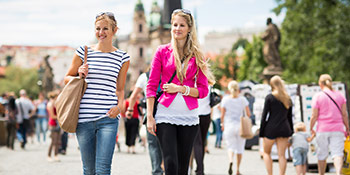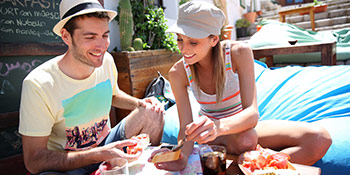Phone: + 39 0541 798670 E-mail: office@bistravel.it
Tuscany, Italy
Tuscany, ITALIAN REGIONS-
 View Largebtravel_tuscany_01
View Largebtravel_tuscany_01 -
 View Largebtravel_tuscany_02
View Largebtravel_tuscany_02 -
 View Largebtravel_tuscany_03
View Largebtravel_tuscany_03 -
 View Largebtravel_tuscany_04
View Largebtravel_tuscany_04 -
 View Largebtravel_tuscany_05
View Largebtravel_tuscany_05 -
 View Largebtravel_tuscany_06
View Largebtravel_tuscany_06 -
 View Largebtravel_tuscany_07
View Largebtravel_tuscany_07 -
 View Largebtravel_tuscany_08
View Largebtravel_tuscany_08 -
 View Largebtravel_tuscany_09
View Largebtravel_tuscany_09 -
 View Largebtravel_tuscany_10
View Largebtravel_tuscany_10 -
 View Largebtravel_tuscany_11
View Largebtravel_tuscany_11 -
 View Largebtravel_tuscany_12
View Largebtravel_tuscany_12
Tuscany is located in central Italy and stretches from the Apennines to the Tyrrhenian Sea.
Its landscape, artistic heritage and stand-out cities – first among them Florence – make Tuscany an unquestioned protagonist of international tourism. In this region, nature has many different facets, starting from the coast that alternates long and sandy beaches, like the Versilia beach, with rocky cliffs and steep headlands. The islands of the Tuscan Archipelago, surrounded by Mediterranean vegetation, a crystal-clear sea and rich seabeds, are peerless.
You can admire sceneries of uncontaminated nature in the Apuan Alps and in several protected areas, such as the Orbetello Lagoon, home to many species of migrant birds, including pink egrets.
However, the most typical sceneries of the region are those that merge the beauty of nature with the millenary work of man. The amazing Gulf of Baratti and the sites of Vetulonia, Vulci and Pitigliano guard necropoli and vestiges of the Etruscan civilization, while Roselle and Cosa evoke memories from the Roman Age.
Medieval villages, historical towns, castles and defense systems, country churches (the so-called pievi) and beautiful abbeys, like the one of Sant’Antimo, are scattered all over the territory and their profiles stand out in the landscapes of the Crete Senesi, Orcia Valley, Garfagnana, Chianti and the Maremma.
Finally, Tuscany is full of spas: Montecatini, Saturnia, Montepulciano, Monsummano and Bagno Vignoni, which offer relaxing holidays thanks to their thermal waters and well-equipped facilities for all types of treatments.
The provinces of the region are: Florence (regional capital), Arezzo, Grosseto, Livorno, Lucca, Massa Carrara, Pisa, Pistoia, Prato and Siena.

Tuscany hosts innumerable astounding localities, many of which are also named UNESCO World Heritage Sites; of course, one must begin with Florence.
Famous all over the world, the ancient Signoria dei Medici is the preeminent cradle of culture and art. It is a true museum under the sky containing countless monuments, including the Duomo, with Giotto’s Bell Tower; Santa Maria Novella; Palazzo Vecchio; and the Uffizi Gallery, with all its unique masterpieces.
The charm of Florence is also evident along the Arno River, on the picturesque Ponte Vecchio, and in the workshops of artisans that liven up the lanes of the old town.
Another extraordinary destination is Siena, with its Medieval town center– itself included on the UNESCO World Heritage List – and culminating with the evocative Piazza del Campo, also theatre for the famous Palio.
Pisa gathers its main monuments in Piazza dei Miracoli, among which is the Leaning Tower that makes up part of an incredibly-valuable artistic area that is protected by UNESCO as well.
Pienza is the “ideal Renaissance town” that was wanted and created by Pope Pius II. The spectacular arrangement of the spaces and the richness of the buildings make this town an artistic treasure (an additional UNESCO insertion).
San Gimignano stands out among the small towns of the region, a Medieval town characterized by its towers and “tower homes” (another site recognized by UNESCO).
Of countless other Tuscan particularities, the Orcia Valley (UNESCO) deserves to be mentioned for the beauty of its fields and landscapes that have inspired many Renaissance artists.

Tuscany offers a wide range of vacation proposals to satisfy all demands: “active” holidays, relaxing stays and special routes that combine nature, art and history. The coast, with its alternating sandy beaches and rocky areas, along with the islands of the Tuscan Archipelago, offer possibilities for both relaxation and physical activity, e.g. water sports: from sailing and windsurfing to canoeing and scuba diving along its beautiful seabeds.
The best way to visit the coast and its green pinewoods is on a bicycle. By night, you can certainly have fun in one of the many trendy venues and discoclubs of Viareggio, Forte dei Marmi, Porto Ercole and Porto Santo Stefano. Famous for its landscapes, Tuscany is the ideal place for a “green” holiday: from Garfagnana to the Maremma, from Casentino to Chianti – anywhere is a great place for hiking, mountain biking or horseback riding. (The area is also full of agritourisms from which to choose.)
The many protected areas reveal particular environments, like the steep heights of the Apuan Alps, Orbetello Lagoon and the Maremma National Park, dominated by the Mediterranean scrub.
Special routes lead to the discovery of the mineral resources of the region: for instance, the Archaeological and Mining Park of San Silvestro contains the millenary history of mining on these Metalliferous Hills with geological routes inside the mines; additionally, you can visit the precious white marble quarries of the Apuan Alps.
Amidst wonderful sceneries and Medieval vestiges, the Via Francigena is an extremely charming and topical spiritual itinerary that still attracts tourists and the devout alike.
If you are looking for a relaxing stay, you can spend some time in one of the region’s many spas, each with different features; try Saturnia, Montecatini or Monsummano Terme, renowned for its detoxifying and skin treatments.
Plenty of food-and-wine itineraries along the wine routes include stops at wineries and farms for tasting very high-caliber wines and the genuine typical products.
Tuscany has a rich calendar of cultural, religious and folklore events: from the world-famous Palio of Siena and the Viareggio Carnival, to the Saracen Tournament in Arezzo and the “explosion of the cart” in Florence on Easter Sunday, among countless other local festivals.

The origins of Tuscan food are rather rustic, as we can see from its basic ingredients: bread, even stale bread, spelt, legumes and vegetables.
Some typical appetizers are crostini (toasted bread) topped by spreads like cream of chicken liver and spleen, panzanella, and salame, including finocchiona, a fennel-flavored salame.
The typical first course is soup, like the famous ribollita or bean soup, spelt soup, pici (a type of spaghetti from the area of Siena), or pappardelle with hare.
A famous fish dish is cacciucco soup, followed by mullets and the stockfish stew of Livorno.
Among meat dishes, the bistecca fiorentina (grilled T-bone steak) is the most popular; guinea-fowl meat, pork and game are quite common as well.
The typical desserts are castagnaccio (chestnut cake), buccellato (anise cake) and cantucci.
Wine production here is excellent for both variety and quality: Tuscany produces the finest wines in Italy, from Chianti to Vino Nobile Montepulciano, Brunello di Montalcino, Vernaccia di San Gimignano and many more. Vin Santo, a sweet and liqueur-like wine, is paired with cantucci (almond cookies, or what Americans refer to as biscotti).

NEWSLETTER